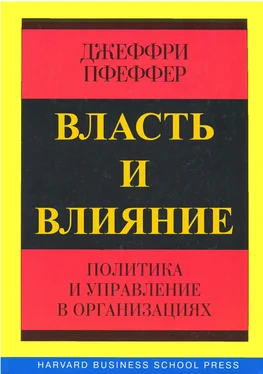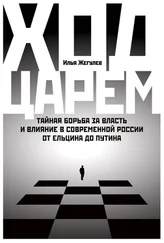ДЖЕФФРИ ПФЕФФЕР - Власть и влияние
Здесь есть возможность читать онлайн «ДЖЕФФРИ ПФЕФФЕР - Власть и влияние» весь текст электронной книги совершенно бесплатно (целиком полную версию без сокращений). В некоторых случаях можно слушать аудио, скачать через торрент в формате fb2 и присутствует краткое содержание. Жанр: Прочая научная литература, на русском языке. Описание произведения, (предисловие) а так же отзывы посетителей доступны на портале библиотеки ЛибКат.
- Название:Власть и влияние
- Автор:
- Жанр:
- Год:неизвестен
- ISBN:нет данных
- Рейтинг книги:3 / 5. Голосов: 1
-
Избранное:Добавить в избранное
- Отзывы:
-
Ваша оценка:
- 60
- 1
- 2
- 3
- 4
- 5
Власть и влияние: краткое содержание, описание и аннотация
Предлагаем к чтению аннотацию, описание, краткое содержание или предисловие (зависит от того, что написал сам автор книги «Власть и влияние»). Если вы не нашли необходимую информацию о книге — напишите в комментариях, мы постараемся отыскать её.
Власть и влияние — читать онлайн бесплатно полную книгу (весь текст) целиком
Ниже представлен текст книги, разбитый по страницам. Система сохранения места последней прочитанной страницы, позволяет с удобством читать онлайн бесплатно книгу «Власть и влияние», без необходимости каждый раз заново искать на чём Вы остановились. Поставьте закладку, и сможете в любой момент перейти на страницу, на которой закончили чтение.
Интервал:
Закладка:
1. John P. Kotter, “Power, Success, and Organizational Effectiveness”, Organizational Dynamics 6, no. 3 (1978): 27-40; and Power and Influence: Beyond Formal Authority (New York: Free Press, 1985).
2. Martin Patchen, “The Locus and Basis of Influence in Organizational Decisions”, Organizational Behavior and Human Performance 11 (1974): 195-221.
3. Jeffrey Gandz and Victor V. Murray, “The Experience of Workplace Politics”, Academy of Management Journal 23 (1980): 237-251.
4. Dan L. Madison et al, “Organizational Politics: An Exploration of Managers’ Perceptions”, Human Relations 33 (1980): 79-100.
5. Jeffrey Pfeffer and Gerald R. Salancik, The External Control of Organizations: A Resource Dependence Perspective (New York: Harper and Row,
1978), 40.
6. Douglas K. Smith and Robert C. Alexander, Fumbling the Future: How Xerox Invented, Then Ignored, the First Personal Computer (New York: William Morrow, 1988), 14.
7. Ibid., 148.
8. M. Ann Welsh and E. Allen Slusher, “Organizational Design as a Context for Political Activity”, Administrative Science Quarterly 31 (1986): 389-402.
9. Rosabeth M. Kanter, Men and Women of the Corporation (New York: Basic Books, 1977).
10. Gerald R. Salancik and Jeffrey Pfeffer, “The Bases and Use of Power in Organizational Decision Making: The Case of a University”, Administrative Science Quarterly 19 (1974): 453-473.
Примечание 455
11. Frederick S. Hills and Thomas A. Mahoney, “University Budgets and organizational Decision Making”, Administrative Science Quarterly 23 (1978): 454-465.
12. Jeffrey Pfeffer and William L. Moore, “Power in University Budgeting: Plication and Extension”, Administrative Science Quarterly 25 (1980): 637-653.
13. Ibid., 650-651.
14. James D. Thompson and Arthur Tuden, “Strategies, Structures and Processes of Organizational Decision”, Comparative Studies in Administration , eds. J.-D. Thompson et al. (Pittsburgh: University of Pittsburgh Press, 1959): 195-216.
15. David Halberstam, The Reckoning (New York: William Morrow, 1986).
16. Patrick Wgright, On a Clear Day You Can See General Motors (Grosse MI: Wright Enterprises, 1979), 33.
17. Salancik and Pfeffer, “Bases and Use of Power.”
18. Chris Argyris, Behind the Front Page (San Francisco: Jossey-Bass, 1974).
19. Diana Tillinghast, “The Los Angeles Times : Weakening of Territorial Imperative”, Newspaper Research Journal 1 (1980): 18-26.
20. Herbert E. Meyer, “Shootout at the Johns-Mansville Corral”, Fortune (October 1976): 146-154.
21. Ibid., 154.
22. Hugh D. Menzies, “The Boardroom Battle at Bendix”, Fortune (January 11, 1982): 54-64.
23. John P. Kotter, The General Managers (New York: Free Press, 1982), “Power, Success, and Organizational Effectiveness”, and Power and Influence.
1. Andrew M. Pettigrew, Politics of Organizational Decision-Making (London: Tavistock, 1973), 240.
2. David Krackhardt, “Assessing the Political Landscape: Structure, Cognition and Power in Organizations”, Administrative Science Quarterly 35 (1990): 342-369.
456 Примечание
3. Jeffrey Pfeffer and Gerald R. Salancik, “Administrator Effectiveness: The Effects of Advocacy and Information on Resource Allocations”, Human Relations 30 (1977): 641-656.
4. Mark Stevens, Sudden Death: The Rise and Fall of E.F. Hutton (New York: Penguin, 1989), 52-53.
5. Ibid., 51-52.
6. Ibid., 215.
7. Henri Tajfel and Joseph P. Forgas, “Social Categorization: Cognitions, Values and Groups”, Social Cognition: Perspectives on Everyday Understanding , ed. Joseph P. Forgas (New York: Academic Press, 1981), 113-140.
8. Marilynn B. Brewer and Roderick M. Kramer, “The Psychology of Intergroup Attitudes and Behavior”, Annual Review of Psychology 36 (1985): 219-243.
9. Charles Perrow, “Departmental Power and Perspectives in Industrial Firms”, Power in Organizations , ed. Mayer K. Zald (Nashville, TN: Vanderbilt University Press, 1970), 59-89.
10. C.R. Hinings et al., “Structural Conditions of Intraorganizational Power Administative Science Quarterly 19 (1974): 22-44.
11. Jeffrey Pfeffer and Gerald R. Salancik, “Organizational Decision Making as a Political Process: The Case of a University Budget”, Administrative Science Quarterly 19 (1974): 135-151; Jeffrey Pfeffer and William L. Moore, “Power in University Budgeting: A Replication and Extension”, Administrative Science Quarterly 25 (1980): 637-653.
12. Martin Patchen, “The Locus and Basis of Influence in Organizational Decisions”, Organizational Behavior and Human Performance 11 (1974): 195-221.
13. Nelson W. Polsby, “How to Study Community Power: The Pluralist Alternative”, Journal of Politics 22 (1960): 474-484.
14. Pfeffer and Salancik, “Organizational Decision Making”; Pfeffer and Moore, “Power in University Budgeting.”
15. Stevens, Sudden Death , 160.
16. T.L. Whisler et al., Centralization of Organizational Control: An Empirical Study of Its Meaning and Measurement”, Journal of Business 40(1967): 10-26.
Примечание 457
17. Michael Lewis, Liar’s Poker: Rising through the Wreckage on Wall Street (New York: Penguin, 1990), 59.
18. John R.P. French, Jr., and Bertram Raven, “The Bases of Social Power”, Group Dynamics , eds. Dorwin Cartwright and Alvin Zander, 3rd ed. (New York: Harper and Row, 1968), 259-269; Patchen, “Locus and Basis of Influence”, 210.
19. Stevens, Sudden Death.
1. Michael L. Tushman, William H. Newman, and Elaine Romanelli, “Convergence and Upheaval: Managing the Unsteady Pace of Organizational Evolution”, California Management Review 29 (1986): 29-44.
2. R.E. Nisbett and L. Ross, Human Inferences: Strategies and Shortcomings of Social Judgment (Englewood Cliffs, NJ: Prentice-Half, 1980).
3. Linda E. Ginzel, “The Impact of Biased Feedback Strategies on Performance Judgments”, Research Paper #1102 (Palo Alto, CA: Graduate School of Business, Stanford University, 1990).
4. Ibid., 26.
5. Robert W. Allen et al., “Organizational Politics: Tactics and Characteristics of Its Actors”, California Management Review 22 (1979): 77-83.
6. David G. Winter, “Leader Appeal, Leader Performance, and the Motive Profiles of Leaders and Followers: A Study of American Presidents and Elections”, Journal of Personality and Social Psychology 52 (1987): 196-202.
7. Ibid., 200.
8. Christopher H. Achen, The Statistical Analysis of Quasi-Experiments (Berkeley: University of California Press, 1986).
9. Andrew M. Pettigrew, Politics of Organizational Decision-Making (London: Tavistock, 1973), 17.
10. Ibid., 31.
11. D.J. Hickson et al., “A Strategic Contingencies’ Theory of Intraorganiza-tional Power”, Administrative Science Quarterly 16 (1971): 216-229.
458 Примечание
12. Martin Patchen, “The Locus and Basis of Influence in Organizational Decisions”, Organizational Behavior and Human Performance 11 (1974): 209.
13. Ibid., 213.
14. George Strauss, “Tactics of Lateral Relationship: The Purchasing Agent”, Administrative Science Quarterly 7 (1962): 161-186.
Читать дальшеИнтервал:
Закладка:
Похожие книги на «Власть и влияние»
Представляем Вашему вниманию похожие книги на «Власть и влияние» списком для выбора. Мы отобрали схожую по названию и смыслу литературу в надежде предоставить читателям больше вариантов отыскать новые, интересные, ещё непрочитанные произведения.
Обсуждение, отзывы о книге «Власть и влияние» и просто собственные мнения читателей. Оставьте ваши комментарии, напишите, что Вы думаете о произведении, его смысле или главных героях. Укажите что конкретно понравилось, а что нет, и почему Вы так считаете.









![Сьюзен Пфеффер - Жизнь, какой мы ее знали [litres]](/books/432292/syuzen-pfeffer-zhizn-kakoj-my-ee-znali-litres-thumb.webp)


